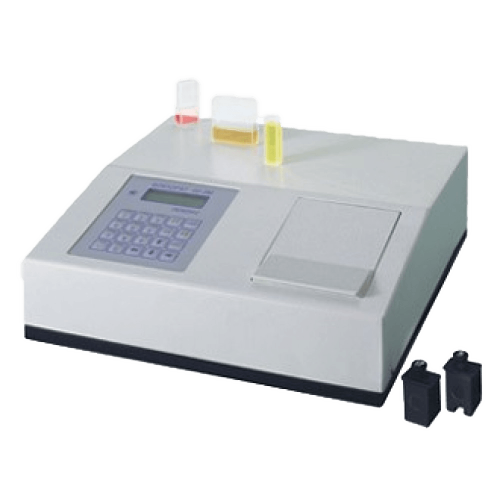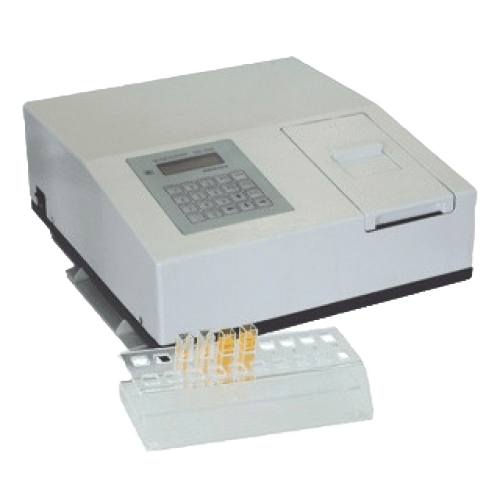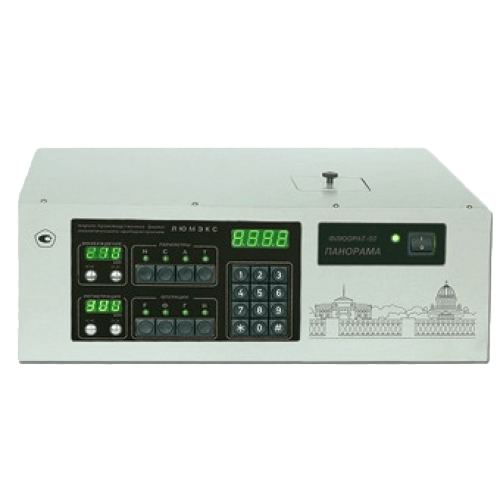Description
The new analyzer “FLUORAT-02-4M” is a new generation of fluorescent-photometric liquid analyzers “FLUORAT-02-2M” .
As a gift – free delivery in Moscow and in any regions of Russia!
The new analyzers are different:
- compact design;
- increased capacity of built-in memory;
- increased ergonomics;
- new universal sample compartment;
- implementation of advanced algorithms for processing results.
Modification “FLUORAT-02-4M” has all the capabilities of the analyzer “FLUORAT-02-5M” . In addition, it can be used to:
- measure phosphorescence;
- carry out detection as part of a LUMAHROM liquid chromatograph.
In the field of methodological support, the new FLUORAT®-02-4M analyzer retained full continuity with its predecessor, the FLUORAT®-02-2M analyzer.
Peculiarities:
- low limits of determination;
- low consumption of main and auxiliary reagents;
- short analysis time;
- high selectivity;
- a wide range of determined indicators;
- saving calibrations in non-volatile memory;
- multifunctionality (fluorimeter, chemiluminometer, phosphorescence measuring device, photometer, nephelometer, fluorimetric detector as part of the LUMAHROM liquid chromatograph )
Specifications:
| Spectral range of optical radiation, nm: |
|
| excitation channel |
from 250 to 650 |
| transmission channel |
from 250 to 650 |
| registration channel |
from 250 to 650 |
| Limit of detection of control substance (phenol) in water, mg/dm3, not more than |
0,005 |
| Measurement range of mass concentration of control substance (phenol) in water, mg/dm3 |
from 0.01 to 25 |
| Limits of permissible absolute error of the analyzer when measuring the mass concentration of the control substance (phenol) in water, mg/dm3 |
±(0.004 + 0.10*C) |
| Measurement range of directional transmittance, % |
from 5 to 100 |
| Limits of permissible absolute error in measurements of the directional transmittance, % |
±2 |
| Warm-up time, min, no more |
30 |
| Time of continuous operation, h, not less |
8 |
| Overall dimensions, mm, no more |
305x320x110 |
| Weight, kg, no more |
6,5 |
| AC Power: |
|
| – AC supply voltage, V |
(220 ±22) |
| – frequency Hz |
(50 ±1) |
| Power consumption, V×A, no more |
36 |
| Time to failure, h, not less |
2500 |
| Average service life, years |
5 |
| Operating conditions: |
|
| – ambient air temperature, °C |
from 10 to 35 |
| – atmospheric pressure, kPa |
from 84 to 106.7 |
| – relative humidity at a temperature of 25 °С%, no more |
80 |
| * C – current value of the mass concentration of the control substance (phenol) | |
Fluorat 02-4M analyzer allows you to solve the following problems:
- Determination of aluminum in water
- Determination of anionic surfactants (surfactants) in water
- Determination of anti-caking agent lilamin in mineral fertilizers
- Determination of beryllium in water
- Determination of boron in water
- Determination of vanadium in water
- Determination of vitamin B1 (thiamine) and vitamin B2 (riboflavin) in food products, food raw materials and dietary supplements
- Determination of manganese in water
- Determination of copper in water
- Determination of copper in air
- Determination of mineral oils in gases and cryoproducts
- Determination of molybdenum in water
- Determination of arsenic in water
- Determination of oil products in water
- Determination of petroleum products in soil
- Determination of nickel in water
- Determination of nitrite in water
- Determination of total iron in water
- Determination of total chromium and chromium (VI) in water
- Determination of tin in samples of natural, drinking and waste water
- Determination of selenium in drinking water
- Determination of selenium in samples of food products and food raw materials, animal feed and raw materials for its production
- Determination of phenol in sources of air pollution
- Determination of phenols in water
- Determination of phenols in the air
- Determination of fluorescein in water
- Determination of formaldehyde in water
- Determination of formaldehyde in the air
- Determination of formaldehyde in sources of air pollution
- Determination of hydrogen fluoride in air
- Determination of chemical oxygen demand (COD) in water
- Determination of cyanides in water
- Determination of zinc in water
- Determination of zinc in the air
- Determination of vitamin C in food products and food raw materials
- Determination of cationic surfactants (SAS) in water
- Determination of uranium in water
- Determination of toxicity of waters, aqueous extracts from soils, sewage sludge and wastes by changing the level of chlorophyll fluorescence
- Determination of malvidin-3,5-diglycoside in wine
- Determination of thiocyanates in formation waters
- Determination of organic matter in soil according to GOST 26213-91




